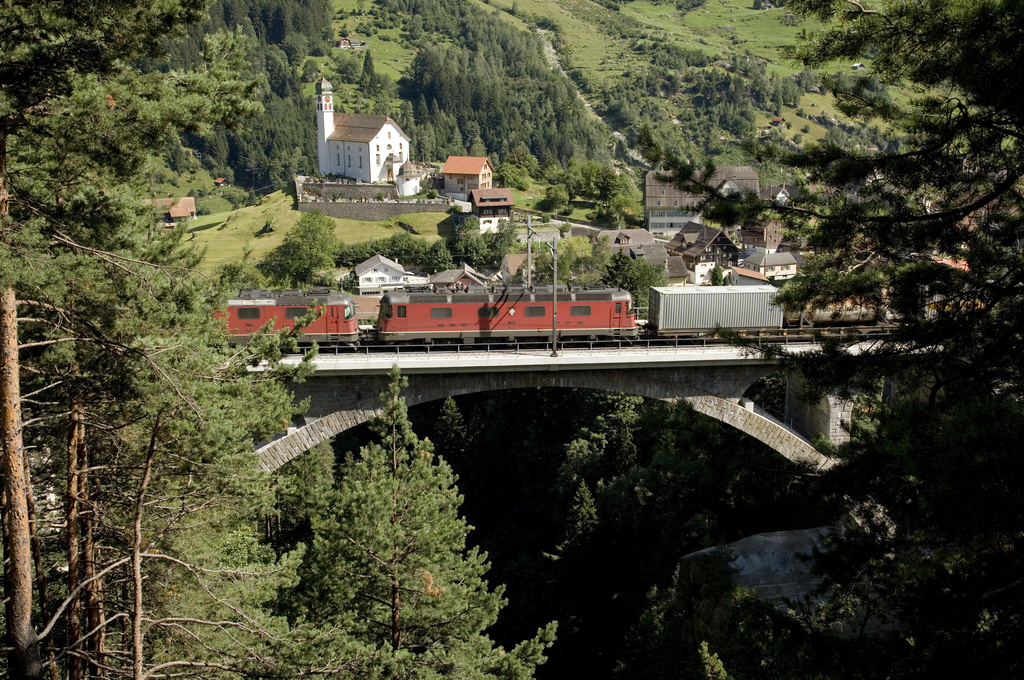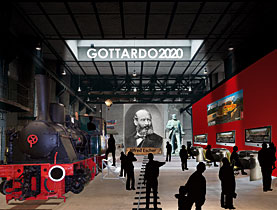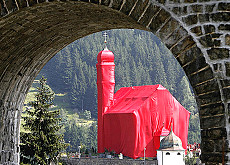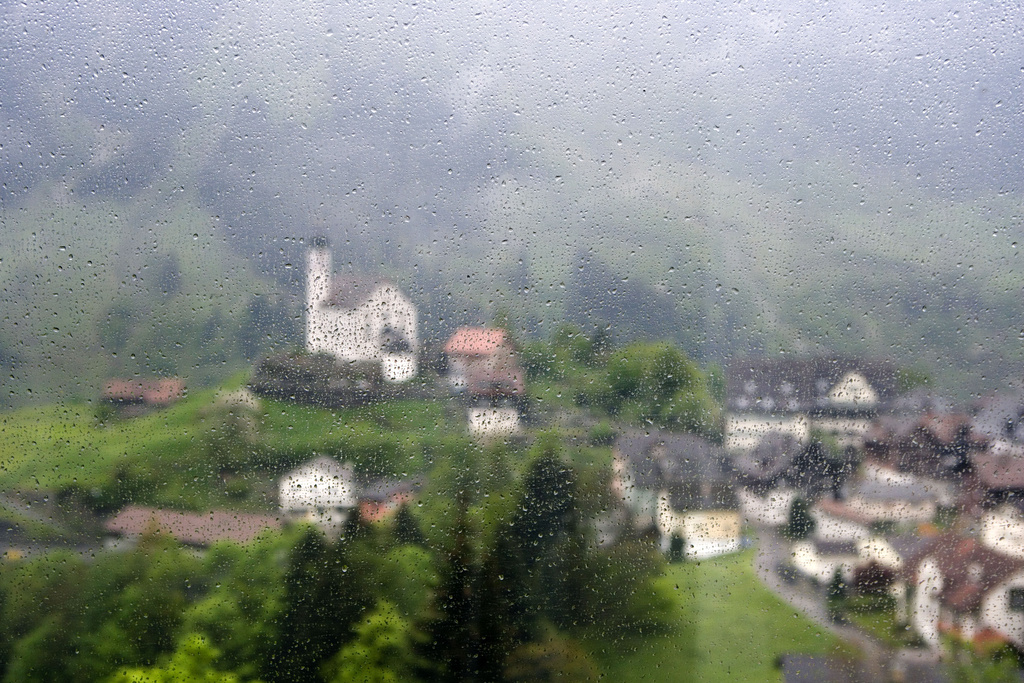The Swiss church that steals the limelight

Wassen in canton Uri south of the Gotthard road and rail tunnels is not exactly a village where the thousands of people who pass by every day will make a stop.
At a height of 930 metres above sea level and enclosed by the Alps, Wassen can look a bit grim at the best of times.
But Wassen has a jewel that most Swiss and many tourists to Switzerland cannot ignore – its baroque Catholic church that is perhaps the most outstanding in the whole of the country; you just can’t miss it.
It’s not only a symbol of the village and the surrounding landscape but also of Swiss Federal Railways, which is well aware of its attraction.
When Federal Railways was awarded the Wakker Prize for cultural heritage in 2005, it did not hesitate to devote a small booklet to the church.
Esther Burri, who has been pastoral assistant there for the best part of two years, knows exactly what the church means.
Three times
“The church here in Wassen is certainly one of the most well-known in Switzerland, if not the most well-known, because you see it three times from the train.
“Everyone speaks about this church. If you tell someone that you work and live here, everyone knows where it is and I find that very special.”
You can see it three times from the train because of the helical tunnels that help the train up and down the Gotthard ramp, but the church of St Gallus helps you get your bearings.
But how many people actually stop in Wassen to look inside the little church? It’s only a fraction of the people who pass by every day, but it’s tempting to say that they don’t know what they are missing.
The church is anything but little, despite the fact that it’s known locally as the “Chileli” (little church) . Entering the church, you can’t help feel that its inside is rather ostentatious but then you have to remember that the baroque style was intended to be rather grandiose.
Fascination
“Baroque isn’t exactly the style that I like best but the longer I’m here, in this church and in the other baroque churches in the area, it has begun to fascinate me,” Burri said.
“There’s so much to see; it’s never boring, you discover something all the time and I still don’t know the meaning of all the figures [statues] that are in the Wassen church.”
Burri had to make rather adventurous changes when she came to live in Wassen with her husband, who is the sacristan.
Moving from the town of Winterthur, north of Zurich, to the wilds of Wassen wasn’t easy.
“Yes, I was in a town before and didn’t have to drive a car. I learnt how to drive when I was young and then I didn’t drive for 25 years.
“And then I had to learn again because quite often we have two church services one after the other and public transport [here] just wouldn’t get me from one place to another on time.”
Claustrophobic?
Living in Wassen can make you feel a little claustrophobic because the steep mountain faces are so near.
“There are still days when the mountains really get close, sometimes so close that I almost have a shortage of breath, but right from the beginning living with the local people was good and that of course helps a lot,” Burri said.
The population of Wassen has been dwindling over the years because as Konrad Gamma, president of the village’s tourist federation explained, there’s little employment available for local people.
“In 2008, we had 462 inhabitants and the figures have been falling. There are no possibilities for apprenticeships or real work, only for unskilled labour,” he said.
“But there are still farms and services such as the banks, the post office and the village shop… There is nothing else. When you want to work you have to find something elsewhere.”
Scenic route
In the summer season, many motorists and motor cyclists travel through Wassen to reach the Susten Pass, a scenic route that connects the Reuss Valley with the Hasli Valley in the Bernese Oberland.
The pass road is only open for a few months a year but it attracts those who know its charms for being off the beaten track.
While some in Wassen don’t like the congestion on local roads off the Gotthard motorway during the summer months, there’s always a thought to be spared for those who take the train.
“One reason is that people who we’ve known from the past give us a quick telephone call and say they’re just passing Wassen and you can go to the window and wave and maybe they will see that. It’s really very special,” Burri said.
Robert Brookes in Wassen, swissinfo.ch
The history books will tell you that the church has lived alongside the Gotthard railway since 1882, but the church existed long before the advent of the train. It was built in 1733.
Both outside and inside the church’s appearance was renovated between 1965 and 1967.
On average, 30 people attend the services at the church.
Its bells toll when a resident has died and most know from the different bells used if it was a man or a woman.
The village is the last place you can take a break before entering the Gotthard road tunnel from Göschenen to Airolo. (It’s four kilometres to the tunnel entrance.)
Wassen is at the crossroads of the Gotthard and Susten routes.
It is also the starting point of a round trip of the Susten, Grimsel and Furka passes, which offer a breathtaking experience, combining Alpine scenery with the technical achievements of road engineers.
The village is also known far and wide for its hiking and biking trails.
The Gottardo long-distance trail between Erstfeld and Biasca was opened for the 125th anniversary of the Gotthard Railway. Panels at over 50 places, including Wassen, provide information on the Gotthard region and its railway.
Between Gurtnellen, Wassen and Göschenen, the railway line climbs 370 metres.

In compliance with the JTI standards
More: SWI swissinfo.ch certified by the Journalism Trust Initiative




You can find an overview of ongoing debates with our journalists here. Please join us!
If you want to start a conversation about a topic raised in this article or want to report factual errors, email us at english@swissinfo.ch.